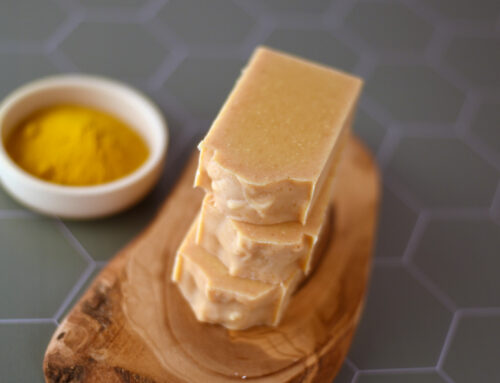Water in soaping is used to dissolve the lye crystals. It is not recommended to use tap water as it can contain minerals, calcium and other contaminants that will end up in your soap. I tend to stick with distilled bottled water. Water is eventually evaporated out during the curing time. Using more water will result in softer soap that takes longer to unmold and cure. Using less water (water discounting) results in soap that firms up faster and takes less time to cure (as far as water evaporation). Soap is still better if left to cure 4 weeks or longer to make a milder bar regardless of how much water is discounted.
Water calculations are based on the lye amount in your recipe not the oil amount. So you must first determine your lye amount based on your oils used. You can use http://www.soapcalc.com/ and plug in your recipe to determin your lye needed. After you’ve determined the lye amount you can now calculate the water amount. The most common “non-discounted” lye and water solution is 27% lye and 73% water. I recommend this amount for soapers just starting out or if you are testing a new fragrance oil or using ingredients that accelerate trace. Lye calculators will calculate this for you but in case you would like to figure it out on your own please see examples below.
To calculate a non-discounted water amount use this formula:
Water = Lye Amount * 73 / 27
So if your recipe calls for 2 oz of lye:
Water = 2 oz lye * 73 / 27
Water = 5.4 oz
I do not recommend using a discounted water solution higher than 40% lye and 60% water (water = lye * 1.5). Please note that using a higher water discount means that your lye solution will be much more concentrated and more dangerous if it comes in contact with your skin or other surfaces. I typically multiply my lye amount by 2 to get my water amount. This gives my solution a ratio of about 33% lye and 66% water and the formula is easy to remember. So if my formula calls for 2.2 ounces of lye, I will use 4.4 ounces of water.
You want to be careful in discounting water for recipes that use milk, honey, clays, oatmeal as these ingredients absorb water and can cause cracking if a high water discount is used. You also want to be careful in discounting water when using new fragrance oils and other additives as you don’t know how the fragrance oil might react or affect trace.






Thanks for the info! I’m curious, if my normal soap recipe makes 5 lbs of soap, and I try a water discount, will my recipe make less soap? Will I need to up the recipe to make the normal 5 lbs?
Thanks!